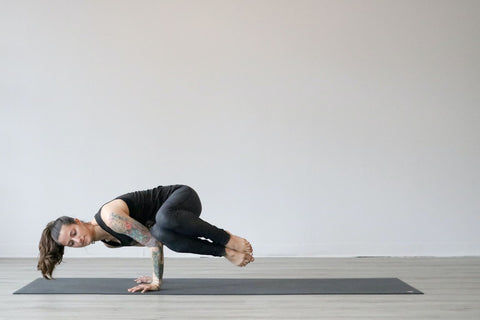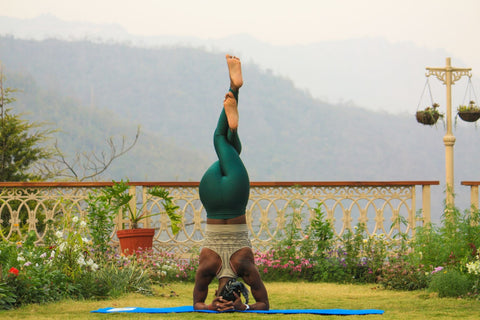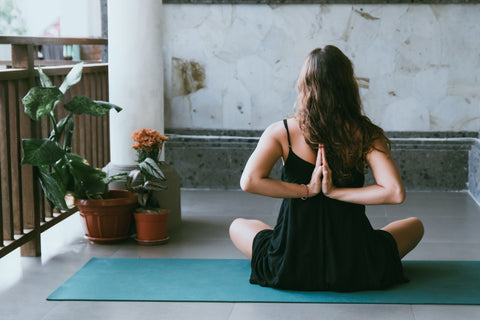There are many varying opinions in the health and wellness world about fitness and yoga while pregnant, but ultimately it is a choice to be made by each mother with the guidance of her doctor or midwife.
That said, for many women, yoga can be a great way to exercise safely during pregnancy. However, it can be challenging for those who have a very physical practice pre-pregnancy as that will significantly change with the growth of your body.
In the first trimester, it is all about doing activities that keep you feeling good, especially if you experience nausea. Avoiding poses where your head is down or that cause excessive heat is great. However, moving and breathing is still ideal because many women’s bodies don’t change drastically during the first trimester, which allows you to keep up with your regular practice.
Come the second trimester though, things begin to change. It may become more difficult to move and maneuver, and issues like SI joint pain can flare up. This is a great time to start using blocks to modify your poses or begin a slower at-home practice. I even co-created a pregnancy fitness app that includes guided yoga sessions that progress with pregnancy to address this exact need!
Finally, in the third trimester, it is all about safety and giving yourself the relief you need. In addition, this is a great time to start really working on a breathing/mindfulness practice to help get ready for delivery!

If you choose to practice during your pregnancy, here are five tips to maintain safety:
Stretching
During pregnancy, with all of the relaxin running through your body, it’s not advisable to go for super deep stretches. Instead, find gentle variations of stretching for relief and release without trying to reach new flexibility goals.
Strengthening
On the flip side, with all those loose muscles and joints, strengthening is even more important! For many women, lower back pain, often caused by the SI Joint, is a combination of weakened ligaments/joints and the pressure of your growing belly, and expanding uterus. It’s vital to strengthen the glutes, adductor and abductor muscles to help stabilize this region.
Twisting and Compressions
Not only will this become very difficult with a big belly (leaning forward and twisting sideways), but you also don’t want to cause any extra compression. Think about it; your organs are already being moved around and squished, so why add to it? Avoid deep twists especially from standing and instead take gentle ones on your back, if it’s still comfortable. Forward folds should definitely be taken lightly and should be done with the support of blocks as you grow.
Getting Upside Down
This one is a bit controversial and I hate to say anything is black and white. Some women love getting upside down during their pregnancy and, if it works for you, then it works for you. From what I understand, the risk as you get further along is flipping the baby into an unfavorable position. Additionally, since your balance isn’t great and your core strength is very different, it may be hard to hold the position, meaning that falling is a greater risk.
Balance
As mentioned in number four, balance is all out of whack while pregnant so be kind on yourself. If a balance pose isn’t working, let it go. Being able to do tree pose or dancers with a belly doesn’t make you a more or less qualified mom! Additionally, one leg balancing poses can put extra strain on the hips which are already under a lot of pressure (refer back to tip number one!) so it might be a good idea to avoid tons of one leg balancing in general!
Overall, the most important thing is to go slow and listen to your body. When your body says ouch, just stop! If you notice that you are way more flexible than usual, don’t take it as a sign to push harder. Appreciating what our bodies are going through is tough, but yoga is a good reminder that! There are many different phases to life and at this moment in time, it is important to recognize the signs of what your body needs, even if it is a different and slower practice.









